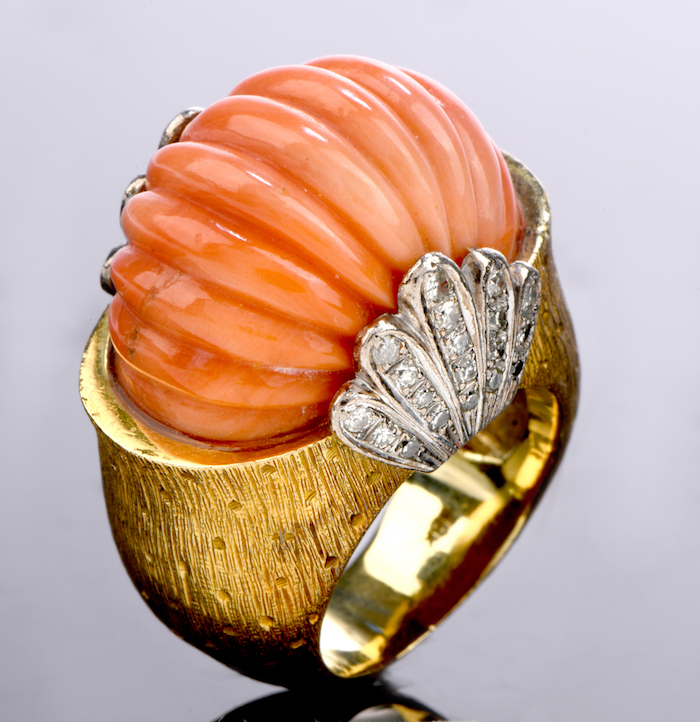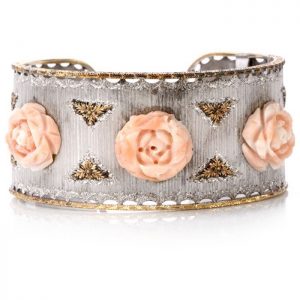
What Exactly is Coral?
If you think about coral, you probably imagine warm tropical seas and reefs filled with brightly colored fish. In fact, stony, shallow-water corals — the kind that build reefs — are only one of thousands of types of coral. There are also soft corals and deep-water corals that live in dark, cold waters.
Corals are living organisms. This means that they are composed of hundreds of thousands of individual polyps. Each polyp secretes a hard outer skeleton of calcium carbonate (limestone) to attach itself to rocks or to the dead skeletons of other polyps.
So, are corals plants or animals? Actually, they are animals because they need to catch their own food, unlike plants which can synthesize it. Corals have minute stinging cells on their tentacles which wave around in the water sweeping passing small fish and other material into their mouths.
History
The Ancient Greeks, Romans, and Native Americans prized the deep red, bright pink, and clear white corals which were traded for other goods inland where other cultures had no access to the sea. Throughout the centuries, coral was thought to have strong medicinal and spiritual powers, and Roman women hung coral around their necks as a charm against sterility. The Chinese viewed coral as a symbol of longevity, and the Ancient Greeks believed it could counteract witchcraft, poisons and even storms. Coral is common in Native American jewelry and in the 19th century, the Navajo named it as one of the eighteen sacred objects.
Where Does Coral Come From?
The red Mediterranean coral (called corallium rubrum) is most often used for “haute joaillerie” and comes in the palest of pink to the strongest reds. It is harvested off the coasts of Italy, Spain, Algeria and Tunisia. Other types of coral are found in the sea surrounding Malaysia, Japan, Australia, Africa and many Pacific Islands.
Coral reefs, admittedly, are a threatened ecosystem in some parts of the world. Hawaiian black coral has already been protected and there are efforts underway to limit the harvesting of other varieties. Coral was widely accessible for centuries, and it is only in the past few decades or so that we have come to realize the consequences of over-harvesting and pollution in our oceans. Our collection of coral jewelry dates back to the 1920’s when such consequences were unknown.
Collecting Coral Jewelry: Art Deco
 Coral is very versatile. It is soft and can be sculpted, carved into round or square shapes, smoothed into cabochons or used in chains or link bracelets and necklaces. It is also used in its natural branch form.
Coral is very versatile. It is soft and can be sculpted, carved into round or square shapes, smoothed into cabochons or used in chains or link bracelets and necklaces. It is also used in its natural branch form.
The trend for collecting coral jewelry has been on the upswing for some time, with pieces from the Art Deco period gaining significantly in value and popularity. During the 1920s European jewelry designers used coral as a way to introduce color into their pieces, mixing it with onyx, diamonds, lacquer or lapis lazuli. It was made into brooches, rings, combs, pendants and other types of jewelry.
This is a fascinating early Art Deco lapel brooch made by Giulio Nardi, the designer of Moretto brooches in Italy in the 1920s. It is in 18-karat white gold and depicts a sculptured figure in black and red coral, known as the turbaned Moor of Venice. It features a diamond and coral turban wrapped in round-faceted diamonds. The stones are set within botanically inspired elongated leaf and floral motif settings, and the brooch’s center features a cameo sculpture of a child in carved red coral.
Collecting Coral Jewelry: Vintage
Coral also coincides with the current popularity of vintage jewelry, particularly as many fine pieces from the ‘40s, ‘50s and ‘60s have coral in them. You will often find three colors in vintage jewelry from this period – onyx, coral and diamond, most often set in gold.
Here we have a pair of vintage 1950s dangle earrings with diamonds and a carved coral twist design.
Coral can work equally well in men’s jewelry. These coral, onyx and diamond cufflinks set in 18k yellow gold provides a timeless and elegant pop of color, and the soft subtleties of this Vintage 1970s 14k Pink Coral Necklace adds a gentle sophistication to any wardrobe.
 Good quality coral jewelry is selling for thousands of dollars, with some of the best antique pieces fetching $100,000 or more. In 1987, a Cartier designed coral, emerald and diamond necklace originally owned by the Duchess of Windsor was auctioned at Sotheby’s for $110,500. In 2012, Sotheby’s sold a coral beaded necklace for $53, 125.
Good quality coral jewelry is selling for thousands of dollars, with some of the best antique pieces fetching $100,000 or more. In 1987, a Cartier designed coral, emerald and diamond necklace originally owned by the Duchess of Windsor was auctioned at Sotheby’s for $110,500. In 2012, Sotheby’s sold a coral beaded necklace for $53, 125.
Coral has been admired and prized for use in jewelry for centuries, and with better management of our oceans and coral reefs, we hope its spectacular and varied colors will be enjoyed for many centuries to come.


